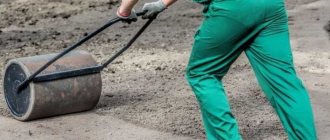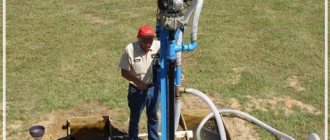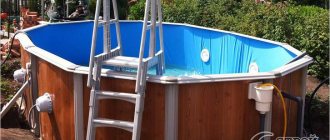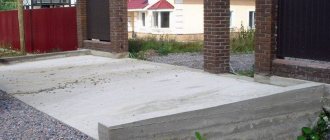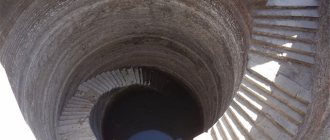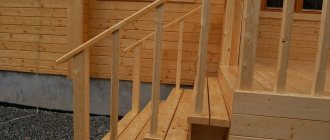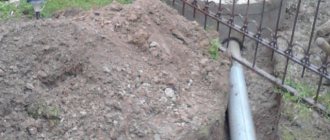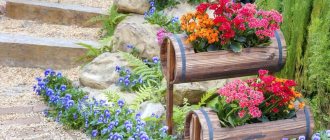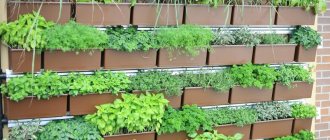Author: Alexander Mikhalych 08/16/2020 I am glad to welcome you, friends! Tell me, have you ever encountered a water shortage in your garden? If yes, this article is just for you. In the summer, having a sufficient amount of life-giving moisture is more important than ever. Its deficiency can significantly worsen the summer resident’s time on the site. Consumption goes for: watering, shower, swimming pool and other household needs. In order not to get into a difficult situation, there is one sure way out - a well at your dacha with your own hands. That's right, you heard right - with your own hands. Many people believe that drilling a well requires a whole team with equipment. This is partly true, but not necessarily so. You can do it on your own. We'll talk about how to do this. But first things first.
Detailed instructions for well installation
Required tool:
- Borax
- Winch
- Barbell
- Casing
- Pump
- Water pipes
- Filters
- Valves
The tower is needed for a deeper dive; it acts as a helping hand when pulling out the drill with a hose. It is enough to follow these instructions, and you will be able to do the proper installation of wells with your own hands, saving your savings on calling a wide range of craftsmen.
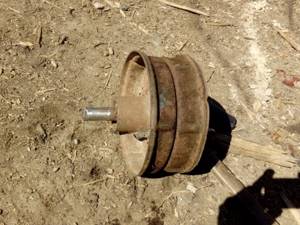
Attention! To use the mineral for gardening purposes, a modest source located at shallow heights (2.5-4 meters) is suitable. You can easily make an opening in the ground using ordinary borax.

Next, we will consider methods of drilling wells and the necessary auxiliary equipment.
Preparing the building for use
Upon reaching the water boundary, the drilling stage is considered completed. The well is thoroughly cleaned with a bailer, after which a filter is installed at the bottom to trap debris. Meth can be used as a filter. mesh, perforated pipe, or all in combination.
After completing the interior arrangement, it’s time for ground decoration. Whether a well on a summer cottage will look aesthetically pleasing depends on you. In any case, to begin with, the boardwalks, pit lining are removed, and backfilling is done. Next, a pump is installed to pump out water. It can be submersible or surface. After everything, they begin to ennoble. You can make a simple canopy, equip a beautiful false well, install a tap, etc. See the photo for arrangement options.
Choosing a suitable place
- We begin to loosen the first layers of earth using a regular ax (up to 2 meters)
- If there is wet sand, pull out the drill every 20 centimeters and clear it of adhering soil.
- The presence of a grayish-blue tint of the earth indicates an approach to water resources.
- Having reached the desired point, we remove the drill, filling the container with pipes.
- We connect an electric pump (you can use a gander) to pump the liquids and saturate the plantings.
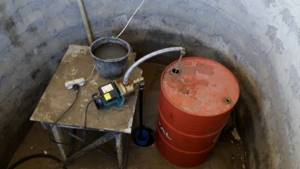
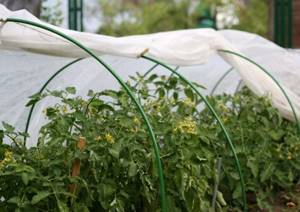
Do-it-yourself greenhouse - review of the best options and step-by-step construction instructions (85 photos)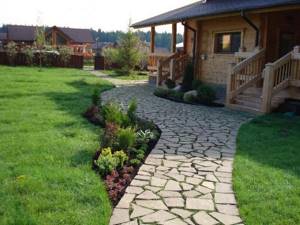
DIY site design - a practical guide to landscape design. Basic rules and expert recommendations
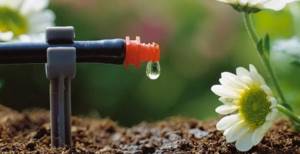
Watering with your own hands: a drip irrigation system made from scrap materials. 90 photos and step-by-step instructions for creating the system
Manual drilling: advantages and disadvantages
Nothing is perfect, so manual drilling of a water pipe has its pros and cons. It’s worth familiarizing yourself with them in more detail so that you don’t have any additional questions during your work later.
Main advantages:
- When done manually, everything is cheap and drilling is not difficult.
- Clear layout and design, easy to change filters.
- There is no need for special equipment to enter the site.
- Even if there is no electricity at the dacha, it is possible to equip a well in such a way that you can use a regular hand pump and be glad that there is a water supply.
- The depth of the water supply is shallow, so the well is pumped very quickly.
- You don't have to buy expensive tools. If something is missing, you can always rent it and protect yourself from additional costs.
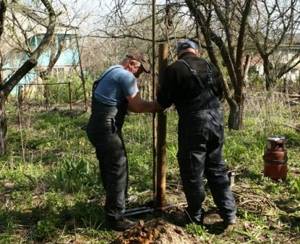
Flaws:
- There is a clear shortage of specialists: it is difficult to find a person who can help make plumbing and water supply. You will have to do the drilling yourself.
- Limited depth: plumbing must be done very carefully.
- Systematic timely cleaning - otherwise you will simply have to drink water that is hazardous to health.
Technology for safe well drilling
The theory goes:
- Testing of the drilling unit, troubleshooting.
- Do not change winch speeds while the device is operating.
- It is prohibited to jam the machine control handles.
- Do not cool rubbing parts with water.
- Twisting and all modulation work is done only with de-energized devices.
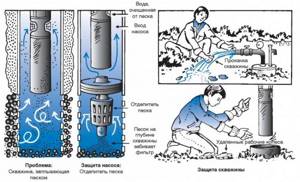
All of the above applies to mechanical drilling using special instruments. This method is effective and fast, I don’t argue, but it will cost you a pretty penny.
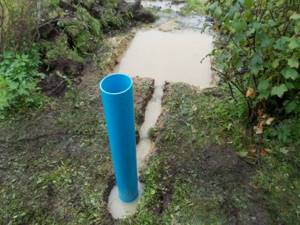
Whether it is possible to make a well without a drilling rig is up to you to decide.

Types of wells
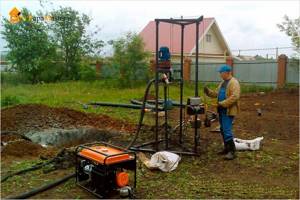
The workings are different and differ from each other in design features. However, their most important difference is their depth. According to this criterion, they are divided into three types:
→
Sandy (on the sand);
→ Artesian (on limestone);
→ Abyssinian well.
The first two types relate to deep drilling. Sandy - up to 50 m, artesian - up to 200 m.
But the Abyssinian well draws moisture from the upper layers, extending down to 15 meters deep. The spring also has a second name – needle. Due to its close proximity to the surface, its arrangement requires a careful approach. The mine must be removed from sewers and drainage pits. The Abyssinian well can be located either in an open area or in a basement. Thus, even in severe frosts, the source will not freeze.
Important! Sandstone water most often does not meet sanitary standards. To extract it, it is necessary to have a pump with a cleaning filter.
The artesian well is considered the deepest. This will require the participation of a team with a drilling rig. As you understand, you can’t pull it with your own hands. Therefore, the remaining two options are suitable for a dacha. And to determine which one is best for you, you need to determine the depth of underground currents in your area.
Advice: do not rush to call specialists for help. Ask your neighbors how deep their wells are. If no more than twenty-five meters - great, there is every chance to cope on your own.
By the way, you can see what a well looks like on a summer cottage in the photo and video.
DIY well photo
Read here: DIY fountain - step-by-step production of a decorative fountain for home and garden
